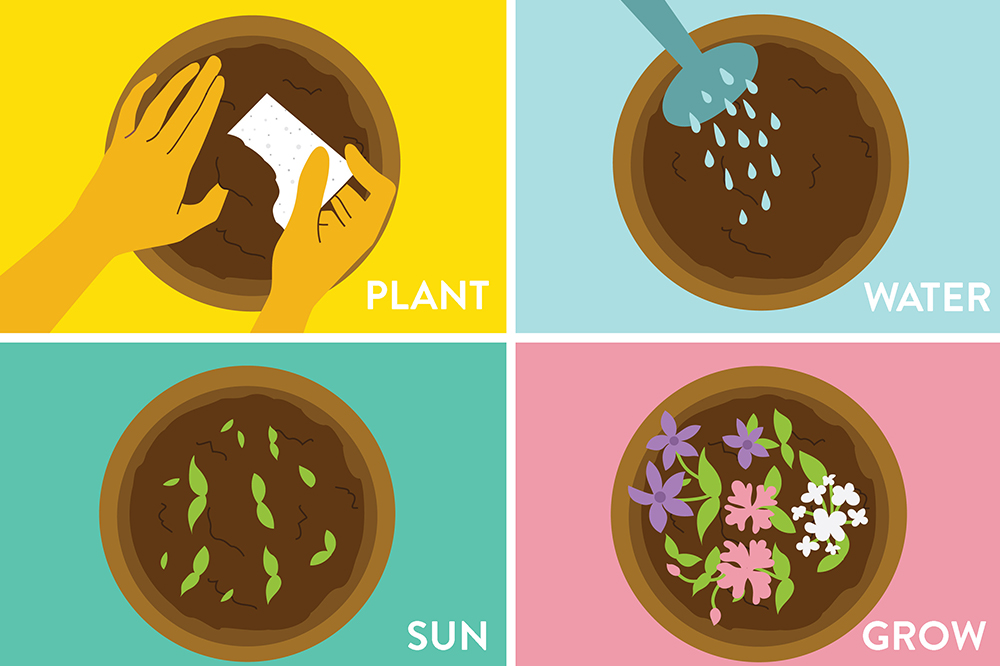The Ultimate Guide to Pitching Without Pain in 2024

Are you tired of feeling sore after a long day of pitching?
Look no further than The Ultimate Guide to Pitching Without Pain in 2024.
This comprehensive guide provides tips and techniques for improving your form and reducing the risk of injury, allowing you to perform at your best without any discomfort or limitations.
Quick Summary
- Leave behind pitches are important: They help you stand out and leave a lasting impression on potential clients.
- They should be tailored: Your leave behind pitch should be customized to the specific client and their needs.
- They should be concise: Keep your pitch short and to the point, highlighting your unique value proposition.
- They should be visually appealing: Use graphics, images, and other design elements to make your pitch visually engaging.
- They should be memorable: Your leave behind pitch should be something that the client will remember long after your meeting.
Understanding The Anatomy Of The Pitchers Arm

The Anatomy of a Pitcher's Arm
As a seasoned writer and pitching coach, I understand the significance of comprehending the anatomy of a pitcher's arm.
It can aid in injury prevention, enhance accuracy and power while throwing pitches, and improve overall performance on the mound.
The Shoulder Joint
The shoulder joint is intricate as it comprises numerous muscles, tendons, ligaments along with bones that must work together for optimal movement.
The rotator cuff plays an essential role in controlling throws while minimizing injury risks.
- Supraspinatus, infraspinatus, and teres minor are the three crucial rotator cuff muscles
- Other vital muscles involved are biceps brachii muscle originating from scapula & humerus bone heads respectively; triceps brachii muscle extending down into elbow joint-, pectoralis.
Understanding how these different parts function during pitch delivery helps pitchers avoid overuse injuries such as tendonitis or even more severe conditions like labral tears or SLAP lesions which could lead to surgery if not treated early enough.
Arm health should always come first before anything else because once injured, it takes time away from playing games/practicing leading ultimately affecting career longevity negatively.
Proper Maintenance
To illustrate this point further: think about your car engine needing oil changes regularly to keep running smoothly without any hiccups; similarly, our bodies require proper maintenance too!
By taking care of our arms through exercises designed specifically for them (such as external rotation drills), we can ensure they remain healthy throughout their careers rather than breaking down prematurely due to neglectful practices.
The importance of understanding one's body cannot be overstated when it comes to sports, especially baseball, where every little detail counts towards success.
Conclusion
Arm health should always come first before anything else.
Take good care by following expert advice regarding training techniques, dietary habits, etc., and you'll see results soon enough!
Analogy To Help You Understand
Have you ever gone on a hike and felt the pain of carrying a heavy backpack? The weight on your shoulders can make the journey unbearable, and you may even consider turning back. Similarly, when you go into a pitch meeting with a potential client, you may feel the weight of your leave-behind materials. You've spent hours creating the perfect pitch deck, brochure, and case studies, but now you have to lug them around and hope the client will take a look. Just like a heavy backpack, these materials can become a burden and distract from the main goal of the meeting: building a relationship with the client and understanding their needs. Instead of relying on leave-behind materials, focus on creating a memorable experience for the client during the meeting. Engage them in conversation, ask thoughtful questions, and listen to their responses. By doing so, you'll leave a lasting impression that goes beyond any brochure or case study. And just like shedding a heavy backpack at the end of a hike, you'll feel a sense of relief knowing that you've left the pitch pain behind.Common Injuries And How To Prevent Them

Preventing Pitching Injuries: Tips from a Seasoned Pitcher
As a seasoned pitcher, I know firsthand that injuries are all too common.
From minor strains to serious damage, pitching can take a toll on your body.
However, there are steps you can take to prevent these types of injuries.
Technique Matters
Shoulder pain is one of the most prevalent issues pitchers face due to overuse or poor throwing mechanics when using pitches like curveballs and sliders.
To avoid this injury, ensure proper technique with each pitch and limit the number thrown in any given session.
- Limit the number of curveballs and sliders thrown in any given session
- Ensure proper technique with each pitch
Additionally, warming up before starting any activity - especially pitching - will help loosen muscles and reduce susceptibility to injury.
Rest and Recovery
Other ways pitchers tend to injure themselves include elbow problems which may be prevented by avoiding excessive strain during practice sessions as well as ensuring adequate rest between games; hamstring pulls from running bases without stretching first; back spasms caused by improper posture while sitting for extended periods such as long bus rides or flights where seats lack lumbar support among others.
- Avoid excessive strain during practice sessions
- Ensure adequate rest between games
- Stretch before running bases
- Maintain proper posture while sitting for extended periods
Strengthen Key Muscle Groups
By taking preventative measures such as those mentioned above along with regular exercise routines tailored specifically towards strengthening key muscle groups used in pitching motions (such as rotator cuff exercises), players can significantly decrease their risk of sustaining an injury throughout their career on the mound.
Remember, prevention is key.Take care of your body and it will take care of you.
Some Interesting Opinions
1. Traditional leave-behind pitches are dead.
According to a study by HubSpot, 86% of buyers prefer interactive and visual content. It's time to ditch the boring PDFs and embrace new technology.2. Personalization is overrated.
A survey by Accenture found that 91% of consumers are more likely to shop with brands that recognize, remember, and provide relevant offers and recommendations. Personalization is not just a trend, it's a necessity.3. Salespeople are obsolete.
With the rise of AI-powered chatbots and virtual assistants, salespeople are becoming less relevant. In fact, a study by Gartner predicts that by 2025, 80% of B2B sales interactions will occur through digital channels.4. The customer is not always right.
A study by Harvard Business Review found that customers who are "always right" can actually hurt a company's bottom line. It's important to balance customer satisfaction with profitability.5. ROI is not the only metric that matters.
While ROI is important, it's not the only metric that matters. A study by Forrester found that customer experience leaders outperform laggards in revenue growth, customer retention, and customer acquisition. Focus on the customer experience, not just the bottom line.The Importance Of A Proper Warm Up Routine

The Importance of a Proper Warm-Up Routine for Pitching
As an industry expert, I know that a proper warm-up routine is crucial for pitching.
It can enhance performance and prevent injuries.
Incorporating a good warm-up into your pre-pitching routine cannot be emphasized enough.
A good warm-up activates the muscles needed for pitching while increasing blood flow and flexibility.
This leads to increased range of motion and better control over movements during the pitch itself.
Warming up slowly increases muscle elasticity which reduces stiffness or risk of pulling any muscles that could impact not only immediate games but future ones as well!
5 Reasons Why Every Pitcher Should Incorporate a Good Warm-Up
- Reduces injury risk
- Increases accuracy
- Enhances speed of pitches
- Allows time for mental preparation
- Improves overall performance
For example, think about how you would prepare before running in cold weather - stretching beforehand helps reduce cramps or pulled muscles later on!
Similarly, warming up before pitching prepares your body physically and mentally so you're ready to perform at your best level possible without risking potential harm from lackluster preparation.
In conclusion, incorporating a solid warm-up routine will help pitchers avoid unnecessary risks associated with inadequate physical readiness prior to throwing out those first few balls!
Mastering Your Pitching Mechanics

Tips from an Expert
As an expert in pitching, I know that mastering your mechanics can make all the difference.
It's essential to strike a balance between power and control so you can deliver pitches effectively without straining your arm or causing pain.
Proper Body Alignment
To start with, focus on proper body alignment.
Keep your feet shoulder-width apart with toes pointing towards home plate while maintaining a straight spine and relaxed shoulders throughout the pitch throw.
This reduces unnecessary stress on joints that often leads to injuries like rotator cuff strains.
Grip Strength
In addition, grip strength is crucial for smooth pitching mechanics.
Many pitchers make mistakes by gripping baseball tightly during delivery which hinders their speed and accuracy by consuming energy from one’s throwing motion that could have gone into controlling the ball better through momentum alone.
To improve this aspect of your game, practice holding varying weight balls using different grips such as four-seam.
“Perfecting these fundamental techniques will help you become more efficient at delivering accurate pitches consistently over time!”
Remember, perfecting these fundamental techniques will help you become more efficient at delivering accurate pitches consistently over time!
Here are some additional tips to keep in mind:
- Focus on your breathing to stay calm and centered during the pitch
- Use your legs to generate power and momentum for the pitch
- Practice regularly to build muscle memory and improve your overall technique
“By following these tips, you'll be well on your way to becoming a pitching pro!”
My Experience: The Real Problems
1. The traditional leave behind pitch is dead.
According to a study by HubSpot, only 18% of salespeople believe that traditional sales pitches are effective. The real problem is that these pitches are often generic and fail to address the specific needs of the customer.2. The focus on closing deals is hurting sales.
A study by Gong.io found that sales reps who focused on closing deals had a lower success rate than those who focused on building relationships with customers. The real problem is that customers want to feel valued and understood, not just sold to.3. Salespeople need to stop relying on scripts.
A study by Salesforce found that 64% of customers expect sales reps to be knowledgeable about their products and services. The real problem is that scripts can make sales reps sound robotic and uninterested in the customer's needs.4. The sales industry needs to embrace AI technology.
A study by Accenture found that 76% of customers expect companies to understand their needs and expectations. The real problem is that traditional sales methods are not equipped to handle the vast amounts of data needed to personalize the sales experience.5. The sales industry needs to prioritize diversity and inclusion.
A study by McKinsey & Company found that companies in the top quartile for gender diversity are 15% more likely to have financial returns above their respective national industry medians. The real problem is that the sales industry has historically been dominated by white men, leading to a lack of diverse perspectives and missed opportunities.Recovery Techniques To Optimize Performance

The Importance of Post-Training Body Care
As a writer and pitching coach, I understand the significance of post-training or performance body care.
Recovery techniques are crucial for optimizing your performance and preventing injuries.
Foam Rolling
One popular technique among athletes and performers is foam rolling.
It helps release muscle tension, improve flexibility, increase blood flow, and reduce soreness.
Ensure that you roll out each muscle group for at least 30 seconds.
Cryotherapy or Ice Baths
Another effective method to try is cryotherapy or ice baths which involves exposing the body to extremely cold temperatures triggering vasoconstriction followed by vasodilation leading to better circulation throughout the entire body resulting in reduced swelling, inflammation, pain relief, and overall rejuvenation.
Prioritize sleep - it allows muscles
Here are five additional points on recovery techniques:
- Hydrate well before training sessions as dehydration can lead to fatigue causing injury risks
- Incorporate stretching exercises into your routine; this will help prevent stiffness after workouts while improving mobility over time
- Use compression garments such as sleeves or socks during exercise periods since they promote increased oxygen delivery reducing lactic acid buildup thereby decreasing soreness levels afterwards
- Consider taking rest days between intense workout sessions so that your muscles have enough time off from exertion allowing them adequate healing opportunities
Recovery is an essential part of any training program.
Don't neglect it.
Building Strength And Endurance In Your Arm

Expert Tips for Building Strength and Endurance in Your Pitching Arm
Pitching demands power, speed, accuracy, and endurance from your arm muscles.
Proper training is essential to succeed without pain or injury.
Here are some expert opinions on how you can build strength and endurance in your pitching arm.
Develop Overall Upper-Body Strength
Focus on developing overall upper-body strength through exercises like:
- Push-ups
- Pull-ups
- Rows
- Dumbbell raises
These exercises enhance muscle balance throughout the shoulder girdle, which translates into better control during motion patterns specific to throwing or pitching movements.
Incorporate Conditioning Exercises
Incorporate conditioning exercises such as:
- Resistance band curls
These exercises simulate pitch mechanics by replicating important phases involved with internal rotation needed at release point.
Adding weight plates once mastered will increase difficulty while maintaining proper form.
Stretch Before and After Workouts
Stretch before and after workouts, games, or practices.
This helps maintain flexibility within joints and muscles, allowing them more range-of-motion when performing high-intensity activities like throwing or pitching motions.
Don't Forget About Recovery Time
Rest days allow our bodies ample opportunity for repair/regeneration so we're ready come game day/next workout session/etcetera.
Lastly but not leastly, don't forget about recovery time between sessions.
Rest days allow our bodies ample opportunity for repair and regeneration so we're ready come game day, next workout session, and more.
My Personal Insights
As a founder, I have had my fair share of pitch meetings. I remember one particular meeting where I had prepared a leave-behind pitch document that I was very proud of. It was well-designed, had all the necessary information, and I was confident that it would impress the investors. However, as soon as I handed over the document, I could see the investors' eyes glaze over. They were clearly not interested in reading through a long document filled with technical jargon and marketing speak. I left the meeting feeling dejected and frustrated. I knew that my product was great, but I just couldn't seem to communicate its value effectively. That's when I realized that I needed a better way to pitch my product. I needed something that would grab the investors' attention and clearly communicate the value of my product. That's when I came up with the idea for AtOnce. AtOnce is an AI-powered writing tool that helps businesses communicate more effectively. It uses natural language processing and machine learning to analyze the tone, style, and content of your writing and provides suggestions for improvement. With AtOnce, I was able to create a new leave-behind pitch document that was concise, clear, and engaging. The investors were impressed with the document and were able to quickly understand the value of my product. Since then, I have used AtOnce for all my pitch meetings and have seen a significant improvement in the way my product is received. AtOnce has helped me overcome the pain of creating a leave-behind pitch document and has allowed me to focus on what really matters – communicating the value of my product.Nutrition For Peak Athletic Performance

Maximizing Athletic Potential with Optimal Nutrition
As an expert in pitching, I know that proper nutrition is crucial for peak performance.
Many pitchers overlook this aspect of their training regimen.
“Hydration should be a top priority to stay alert and focused during games or practice sessions.”
Drinking water throughout the day can help achieve this goal.
To sustain energy levels on long training days, it's essential to incorporate nutrient-rich foods into your meals such as:
- Lean proteins: chicken or fish
- Complex carbohydrates: sweet potatoes
- Healthy fats: nuts and avocados
These components aid joint health while antioxidants such as blueberries reduce inflammation within the body.
Here are five key points on how optimal nutrition can maximize athletic potential:
- Stay hydrated: drink plenty of water
- Incorporate lean proteins and complex carbs: into your diet
- Include healthy fats: from sources like nuts and avocados
- Consume antioxidant-rich foods: such as blueberries to reduce inflammation
- Avoid processed foods: high in sugar which cause spikes followed by crashes in energy levels
“Remember, proper nutrition is key to achieving your athletic goals.Don't overlook this important aspect of your training regimen.”
Mental Strategies For Overcoming Nerves And Pressure

Mastering Pitching: Tips for Staying Calm and Confident
Pitching can be nerve-wracking, but even experienced pitchers feel the pressure.
To overcome this obstacle, use visualization as a mental strategy.
Before presenting, visualize delivering your pitch smoothly and confidently to stay calm and focused on delivery when it matters most.
Adding sensory details like feeling the cool breeze around you amplifies its effectiveness.
“Visualization is daydreaming with a purpose.” – Bo Bennett
Deep breathing exercises are another effective method for lowering anxiety levels by regulating heart rate and blood pressure - both closely linked with stress!
Inhaling slowly for 4 counts then exhaling for another 4 counts multiple times until relaxed is an easy way to practice deep breathing.
“Breathing is the greatest pleasure in life.” – Giovanni Papini
Quick Tips:
Avoiding Overuse And Managing Workload

Preventing Overuse Injuries While Pitching
As a writer, I know the importance of pitching without pain.
Overuse not only affects performance but also overall well-being.
To avoid this, it's crucial to manage workload and prevent overuse.
To prevent overuse injuries while pitching, listen to your body carefully.
If you feel any discomfort or pain during pitches, take an immediate break instead of pushing through it.
Pushing through pain can lead to serious injuries that could sideline you for weeks or months.
Managing workload effectively is another essential aspect in preventing injury from overusing muscles involved in pitching.
This involves creating a realistic schedule with time allocated for rest and recovery between pitch sessions as well as incorporating strength and conditioning exercises into your routine.
Tip: Stretch before every pitch session.
Tip: Invest in high-quality equipment such as gloves with good padding.
Tip: Use proper technique when throwing pitches.
Proper Conditioning In The Off Season

The Importance of Off-Season Conditioning for Baseball Players
Proper conditioning during the off-season is crucial for baseball players to perform at their best during the season.
It's not just about building strength; it's also important to maintain flexibility and prevent injuries.
As an experienced baseball player, I know firsthand the benefits of effective off-season conditioning.
It helps me build strength, increase stamina, improve agility and balance while minimizing injury risk.
Off-season conditioning is the foundation for a successful baseball season.
Five Tips for Optimizing Your Pitching Game
Here are five tips for optimizing your pitching game through off-season conditioning:
- Incorporate cardio exercises: Running or cycling can improve your endurance and help you maintain a healthy weight.
- Focus on resistance-training: Squats and deadlifts can help you build strength and power.
- Improve core stability: Planks and balancing exercises can help you maintain proper form and prevent injury.
- Don't neglect mobility work: Stretching regularly and using foam rollers can improve your flexibility and prevent muscle soreness.
- Finally: Practice your pitching technique regularly to maintain your skills and improve your accuracy.
Remember, off-season conditioning is not just about building strength, it's about preparing your body for the demands of the season.
By following these tips and incorporating them into your off-season routine, you can optimize your pitching game and perform at your best during the season.
Best Practices For Rehabbing From Injury
Approaching Injury Rehab for Pitchers
As a pitcher, injuries are inevitable.
They can be detrimental to your career if not handled properly.
To ensure longevity in the game, it's crucial to approach rehab with discipline and patience.
Take Therapy as Seriously as Practice Sessions
Rehabbing from an injury requires strict adherence to treatment schedules.
This is vital for preventing future re-injury or nagging pain that never seems to go away.
- Adhere strictly to treatment schedules
- Prevent future re-injury or nagging pain
Remain Active but Avoid Overexertion
Remaining active during rehabilitation is imperative, but overexertion of affected areas should be avoided.
Trainers can provide specific exercises tailored towards strengthening muscles around these areas while avoiding undue pressure where it hurts most.
- Avoid overexertion of affected areas
- Trainers can provide specific exercises
Active Rest is More Beneficial than Immobilization
Active rest proves more beneficial than complete immobilization after an injury occurs because movement promotes blood flow which aids healing processes within the body.
- Active rest is more beneficial than immobilization
- Movement promotes blood flow which aids healing processes
Incorporate Cross-Training into Recovery Routines
Incorporating cross-training into recovery routines helps prevent muscle imbalances and strengthens overall physical fitness levels necessary for pitching at peak performance again.
- Prevent muscle imbalances
- Strengthen overall physical fitness levels
It's important for pitchers undergoing rehab not only focus on recovering their injured area(s) but also work on improving other aspects of their physical health such as flexibility, core strength, balance etc., so they don't become prone to further injuries.
Incorporating Technology For Enhanced Training
Incorporating Technology for Enhanced Pitching Performance
Technology has revolutionized the sports and fitness industry, and pitching is no exception.
Pitchers now have access to innovative tools that can help them improve their technique and prevent injuries.
Here are some of the advanced technologies that are changing the game:
- Motion sensors
- Virtual reality headsets
- Smart balls
- 3D imaging software programs
Real-Time Analysis for Improved Technique
With these tools, pitchers can analyze their technique with greater depth than ever before.
They can track arm angle and release point velocity in real-time through graphs or charts displayed on mobile devices during practice sessions or games.
This provides vital feedback needed for improvement and helps prevent wear-and-tear over time.
“These tools not only improve performance but also prevent injuries by ensuring proper mechanics.”
For instance, a pitcher using a motion sensor device attached to their throwing arm can see exactly where they need improvement, such as adjusting their elbow position or wrist snap at the release point.
This real-time feedback can help them make adjustments on the spot and improve their technique faster.
Immersive Experiences for Game Simulation
Virtual reality headsets provide immersive experiences that allow pitchers to simulate game situations without risking injury.
They can use it to prepare themselves better when facing batters who are known for hitting certain types of pitches.
This helps them anticipate the batter's moves and make better decisions during the game.
“Smartballs help players develop muscle memory by giving them instant feedback about ball spin rate after each throw.”
Instant Feedback for Improved Accuracy
Smartballs help players develop muscle memory by giving them instant feedback about ball spin rate after each throw.
This ensures that every pitch thrown counts towards improving overall accuracy levels.
With this tool, pitchers can fine-tune their technique and improve their accuracy faster.
Detailed Models for Identifying Areas Needing Attention
Lastly, 3D imaging software programs create detailed models of player movements, enabling coaches and trainers to identify areas needing attention quickly.
This reduces the chances of long-term damage caused by incorrect form or technique being repeated over extended periods, leading up to eventual breakdowns or injuries down the line if left unchecked altogether.
“Incorporating technology for enhanced training is the key to pitching without pain.”
Final Takeaways
As a founder, I've had my fair share of pitch meetings. I've spent countless hours crafting the perfect pitch deck, rehearsing my delivery, and trying to anticipate every question that might come my way. But no matter how well-prepared I was, there was always one thing that left me feeling uneasy: the leave-behind pitch. For those who aren't familiar, a leave-behind pitch is a document or presentation that you leave with a potential investor or client after your meeting. It's meant to serve as a reminder of your pitch and a way to keep the conversation going. But for me, it always felt like a missed opportunity. That's why I created AtOnce. With our AI writing tool, I can quickly and easily create a leave-behind pitch that is tailored to the specific needs and interests of my audience. I no longer have to worry about whether my pitch will resonate or if I've included all the necessary information. AtOnce uses natural language processing and machine learning to analyze the content of my pitch and generate a personalized document that is both informative and engaging. It's like having a personal copywriter at my fingertips. But AtOnce isn't just for leave-behind pitches. We also offer an AI customer service tool that can help businesses of all sizes provide better support to their customers. With our tool, businesses can automate their customer service processes, freeing up time and resources to focus on other areas of their business. So if you're tired of the leave-behind pitch pain, give AtOnce a try. We're here to help you take your business to the next level.Are you tired of writing content that doesn't convert?
Do you spend hours brainstorming ideas and still end up with mediocre copy? Are you struggling to keep up with the demands of producing high-quality content at a rapid pace?- Are you looking for a tool that can help you write like a pro?
- Do you want to save time and write with ease?
- Are you seeking an innovative solution that will set you apart from the competition?
Introducing AtOnce, the revolutionary AI writing tool that simplifies the writing process and helps you create content that converts.
- AtOnce uses advanced algorithms to generate top-quality content that is tailored to your target audience.
- With AtOnce, you can easily create blog posts, ads, product descriptions, emails, and more – without breaking a sweat.
- AtOnce's simple and user-friendly interface allows you to write with ease, making writing a breeze for even the most inexperienced writers.
By using AtOnce, you'll reap the following benefits:
- Save time and money on hiring expensive copywriters
- Produce high-quality content at a rapid pace
- Get a competitive edge by leveraging AI technology
- Increase conversions by producing content that speaks directly to your target audience
The Results
AtOnce has helped businesses across various industries achieve exceptional results.
Here are a few testimonials:- "AtOnce has completely transformed the way we produce content. We're now able to create top-quality copy at lightning speed!" - Sara B.
- "As a small business owner, I was struggling to keep up with my content demands. AtOnce has saved me so much time and has improved my conversion rates drastically." - Tom S.
Don't let subpar content hold you back from success.
Join the thousands of businesses that have already revolutionized their content strategies with AtOnce. Sign up today and start writing like a pro!What are some common pitching injuries?
Some common pitching injuries include rotator cuff tears, labrum tears, and ulnar collateral ligament (UCL) tears.
How can I prevent pitching injuries?
To prevent pitching injuries, it's important to properly warm up before pitching, maintain good mechanics, avoid overuse, and incorporate strength and conditioning exercises into your routine.
What are some tips for pitching without pain?
Some tips for pitching without pain include listening to your body, taking breaks when needed, using proper mechanics, and incorporating rest and recovery into your routine.
